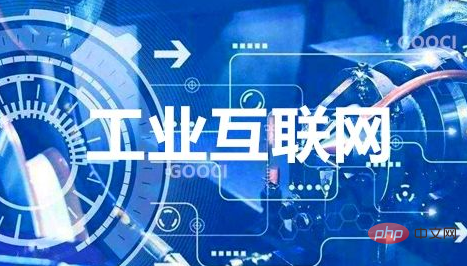Home >Common Problem >What changes has the development of network platform technology promoted?
Promote changes in industrial structure and industrial organization structure. Most of the emerging technology communities have disruptive influence and have shown signs of having a transformative impact on social production and lifestyle; emerging technologies such as cloud computing, big data, and the Internet of Things provide the basis for the large-scale production, sharing, and application of data. And continue to penetrate into the economic, social and public management fields. The "Internet" is booming and integrating with traditional industries, triggering endless business model innovations, leading and catalyzing revolutionary changes in development methods in various fields, and will change human production and life in all aspects.

The operating environment of this tutorial: Windows 7 system, Dell G3 computer.
The development of network platform technology has promoted changes in industrial structure and industrial organization structure.
The in-depth development of information technologies such as computers and the Internet has promoted digital technology innovation. A series of new technology communities derived from digital technology have emerged, showing a trend of group breakthroughs and continuous progress.
Currently, digital technologies that are basically mature and have good application prospects include cloud computing, big data, Internet of Things, artificial intelligence, mobile Internet, blockchain, etc., forming an emerging technology community dominated by digital technology, and in It occupies a dominant position in the global cutting-edge technology system.
There are also some new technologies with good development prospects derived from digital technology, such as 3D printing, virtual reality/augmented reality, etc., which are currently being nurtured. In the future, technological innovation based on digital technology will continue.

Emerging technology communities mostly have disruptive influence and have shown signs of having a transformative impact on social production and lifestyle. Emerging technologies such as cloud computing, big data, and the Internet of Things provide the basis for the large-scale production, sharing, and application of data, and continue to penetrate into the economic, social, and public management fields.
After the Internet entered the mobile Internet stage, the "Internet" developed vigorously and continued to integrate with traditional industries, triggering endless business model innovations, leading and catalyzing revolutionary changes in development methods in various fields, and will change humankind in all aspects Production and living.
Expand knowledge: Evolution trend of industrial organization structure and industrial transformation and upgrading
In an industry, the number of enterprises, size distribution and the relationship between enterprises The division of labor and cooperation relationship is an important feature of this industry, which is generally called the industrial organization structure. In recent years, domestic research on industry has mostly focused on aspects such as industrial structure, technological innovation, and industrial concentration. The relationship between large, medium and small enterprises, that is, the issue of industrial organization structure, has almost become a "forgotten corner." Enterprises of different sizes have their own advantages and play different roles in industrial development. The organic combination of large, medium and small (micro) enterprises constitutes a good industrial ecology. Therefore, the issue of industrial organization structure is crucial to the transformation and upgrading of the economy. At the State Council executive meeting on May 17, 2017, which deployed pilot demonstrations to promote the in-depth implementation of "Made in China 2025", Premier Li Keqiang particularly emphasized the need to "actively support the integrated development of large, small and medium-sized enterprises." In recent years, a new round of technological revolution and industrial transformation has emerged around the world, and the industrial organizational structure has also shown some new trends. Seizing and adapting to new trends in the development of industrial organization structures will also play a positive role in promoting the conversion of old and new driving forces.
New trends in industrial organization structure
Based on information technology (including cloud computing, big data, Internet of Things, mobile Internet, etc.), 3D printing, artificial intelligence and other technologies The development of emerging technologies is changing the relationship between large, small and medium-sized enterprises.
(1) Decentralization
Since the industrial revolution, the organization of production activities has mostly been arranged by a centralized organization, which determines what to produce, how much to produce, how to allocate production resources, and how to divide and organize production activities. In the era of planned economy, this centralized organization is the government, but under the conditions of market economy, it is the enterprise. However, driven by new technologies such as the Internet, production activities are becoming more and more decentralized. The production of many products or services no longer requires a center that issues orders, but is produced through the chaos of countless dispersed individuals with equal status. Activities organized. Not only enterprises, but also a large number of consumers and individual users have entered the production process. Our society has transformed into a society of "integration of production and marketing" after "production for use" and "production for exchange" [10]. These dispersed and unorganized individuals not only publish product usage experiences, share personal daily life or participate in community discussions, they are not limited to various small inventions and micro-innovations, such as the Linux operating system, Wikipedia and many other so-called Great complex products are also created by them. From the perspective of meeting user needs, products (services) can be divided into core products and complete products. For example, WeChat APP and its backend (cloud) data structure, software, hardware resources, etc. are core products, but only core products are of no value to users. A large number of decentralized individuals send messages, post to Moments, and third-party companies develop based on Various applications such as WeChat mini-programs thus make WeChat a complete product. A large number of scattered and decentralized companies and individuals are constantly expanding functions on top of core products and increasing the value of complete products. If computers allow dispersed individuals to participate in product R&D and design and the development of digital products, 3D printers make social manufacturing possible with the participation of many dispersed consumers. Relying on computers and 3D printers, digital model files of products can be transformed into physical products in the office or at home without the need for a factory. Countless individuals or small businesses with 3D printers will be able to produce more complex products through a "cloud manufacturing" network formed by division of labor and collaboration. Crowdsourcing, crowd innovation, and socialized production have become emerging and booming new production models.
(2) Platformization
Driven by information technology, companies that control the industrial value chain are showing a trend of platform transformation. Due to the complexity of information technology products and services, different enterprises and different products of the same enterprise need to be connected through unified standard interfaces, and there are typical network effects. Platforms first appeared in the software field, and the rise of the Internet made them flourish in the Internet industry. Now they have entered the real economy and manufacturing fields with the development of the Internet of Things. For example, in the field of PC operating systems, Microsoft and Apple control the Windows and Mac OX operating system platforms respectively; in the field of smartphones, Google and Apple control the Android and iOS operating systems respectively; in the social field, Facebook, Twitter, WeChat, and e-commerce Amazon, Taobao (Tmall) in the field of sharing economy, Uber, Airbnb, and Didi Chuxing in the field of sharing economy are also platforms. In the manufacturing field, the development trends of digitization, networking and intelligence have also prompted manufacturing companies to establish intelligent platforms to form a cyber-physical system (CPS) that connects upstream and downstream enterprises, customers and various business units, products and parts within the company. . The platform trend of industry leading enterprises is mainly because: first, industry supporting enterprises need to run on the platform. By designing the product (service) architecture and controlling standards, interfaces and data, platform enterprises can master it (compared to upstream and downstream enterprises). ’s) industry voice. Second, network effects are easy to occur on the platform, thus forming a positive feedback mechanism, allowing the strong to stay strong and the winner to take all, which helps companies win in competition with competitors. There are three types of so-called network effects: first, direct network effects, that is, the value of a product/service depends on the number of users using it; second, indirect network effects, that is, the value of a product/service depends on the type of complementary goods Richness; third, bilateral network effect. In a two-sided market, two groups of participants (supply and demand sides) on both sides of the platform need to trade through the platform. The value that each group of participants can obtain depends on the number of participants in the other group. . Third, platform companies can get rid of the limitations of their own resources and achieve faster growth. Uber, the world’s largest taxi company, does not own its own cars; Facebook, the world’s most popular media owner, does not create content; Alibaba, the most valuable retailer, does not own its own inventory; Airbnb, The world's largest provider of accommodation has no real estate of its own. From the perspective of a platform enterprise, the enterprises that provide services to it are almost free from the limit on the number, so its scale can be expanded infinitely. On the other hand, the scale of enterprises that provide services for the platform can vary, and even individuals can participate in production activities. In addition, the emergence of 3D printing technology and digital products have also made it possible for individuals and small businesses to participate in production activities.
(3) Flattening
Driven by information technology, transaction costs between enterprises continue to decline, real-time, high-throughput data transmission becomes possible, and enterprises can change the past situation of relying on layers of agents to contact their customers and suppliers. On the sales side, companies can directly contact customers across distributors and sell products to customers through e-commerce platforms. Customers can also change from passively accepting products designed and produced by companies to directly participating in product development, design and production processes. , that is, the enterprise-driven C2B model transforms into a customer-driven C2M or C2B model. On the procurement side, relying on highly intelligent supply chains and even future cyber-physical systems (CPS), suppliers can understand the inventory and usage status of their own raw materials in downstream production companies in real time, thereby scheduling production more accurately; and production companies can also Able to timely and accurately grasp the production and transportation status of raw materials, and automatically place orders according to production needs. The socialized production model relying on the platform also eliminates the need for middlemen. Therefore, large enterprises and their suppliers (mostly small and medium-sized enterprises) collaborate more closely and have more frequent business contacts. Within the enterprise, also because data collection, transmission and processing are smoother, senior managers can more accurately observe the work efforts of their subordinates and evaluate the performance of their work, and some employees can also have closer contact with the market and customers. , therefore, the internal organizational structure of the company has also shown a trend of flattening - the management levels have been reduced, and the number of highly flexible working groups that face customers has increased, so that the company can respond to market changes more quickly and fully mobilize the innovative vitality of employees.
For more related knowledge, please visit the FAQ column!
The above is the detailed content of What changes has the development of network platform technology promoted?. For more information, please follow other related articles on the PHP Chinese website!